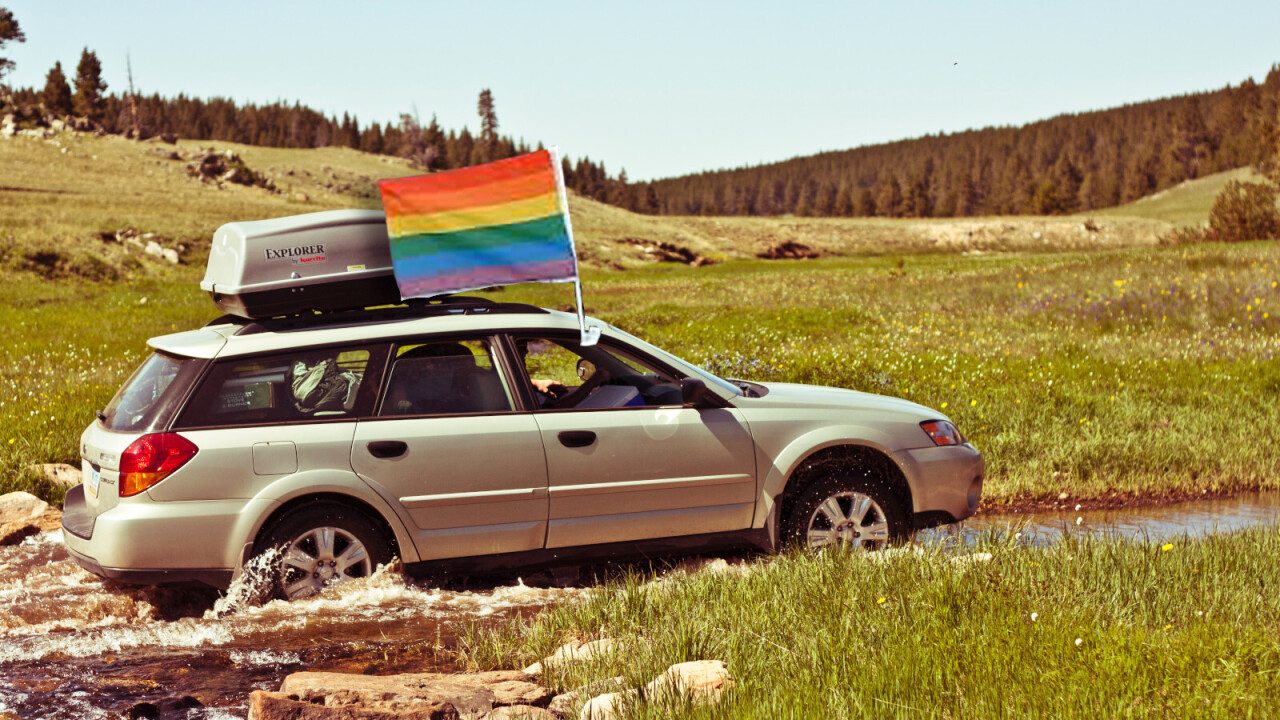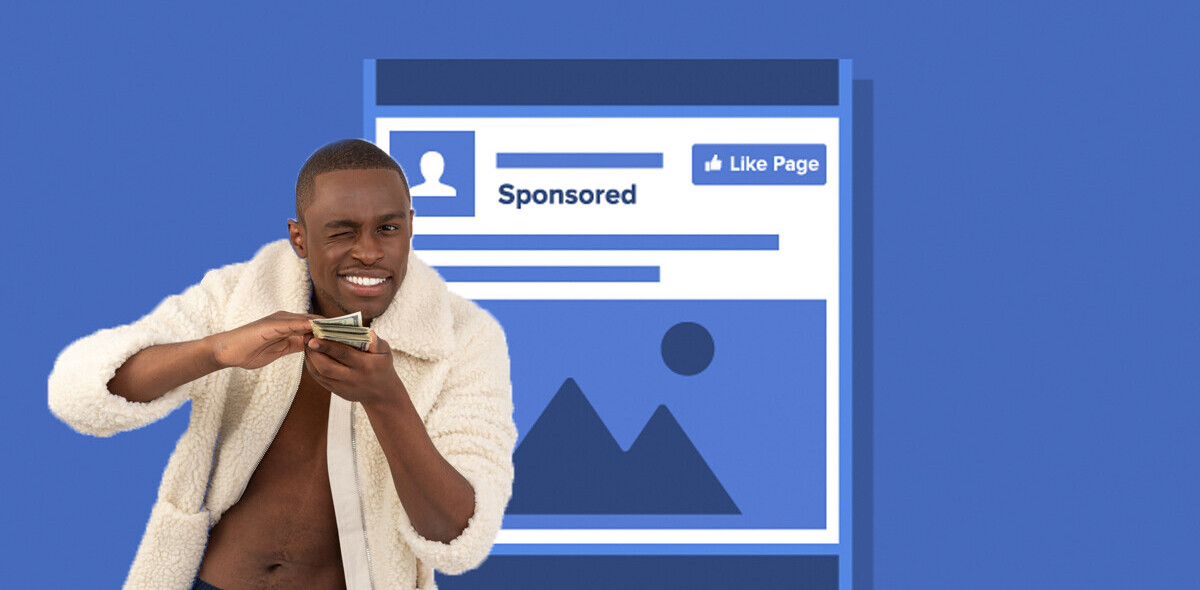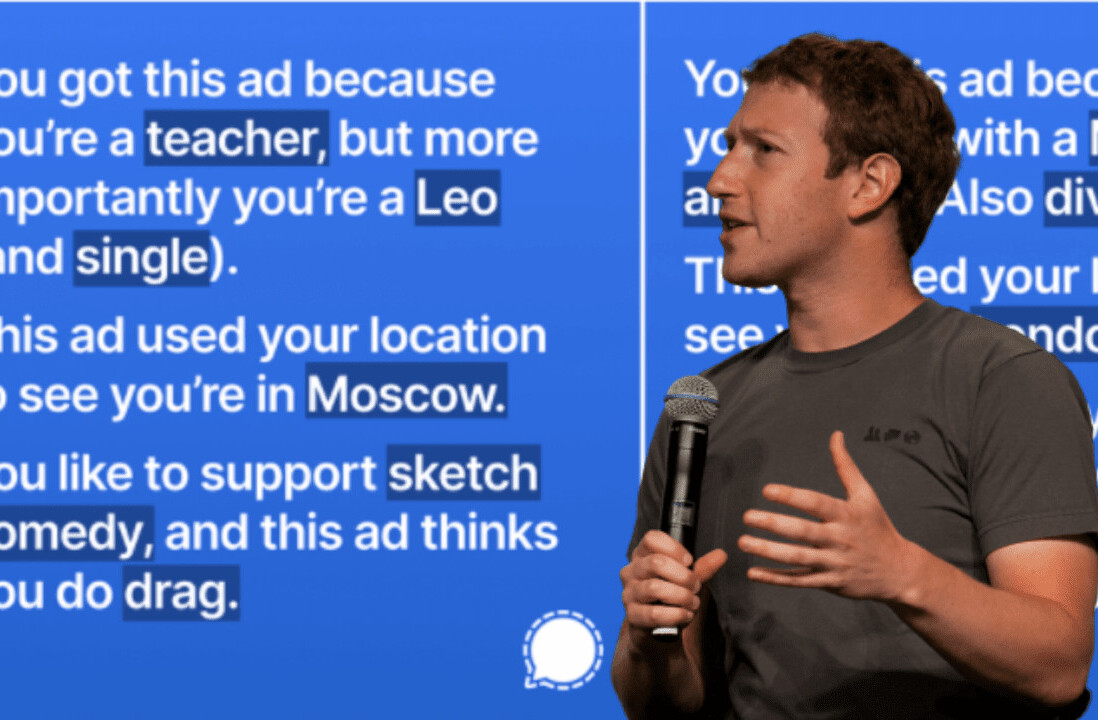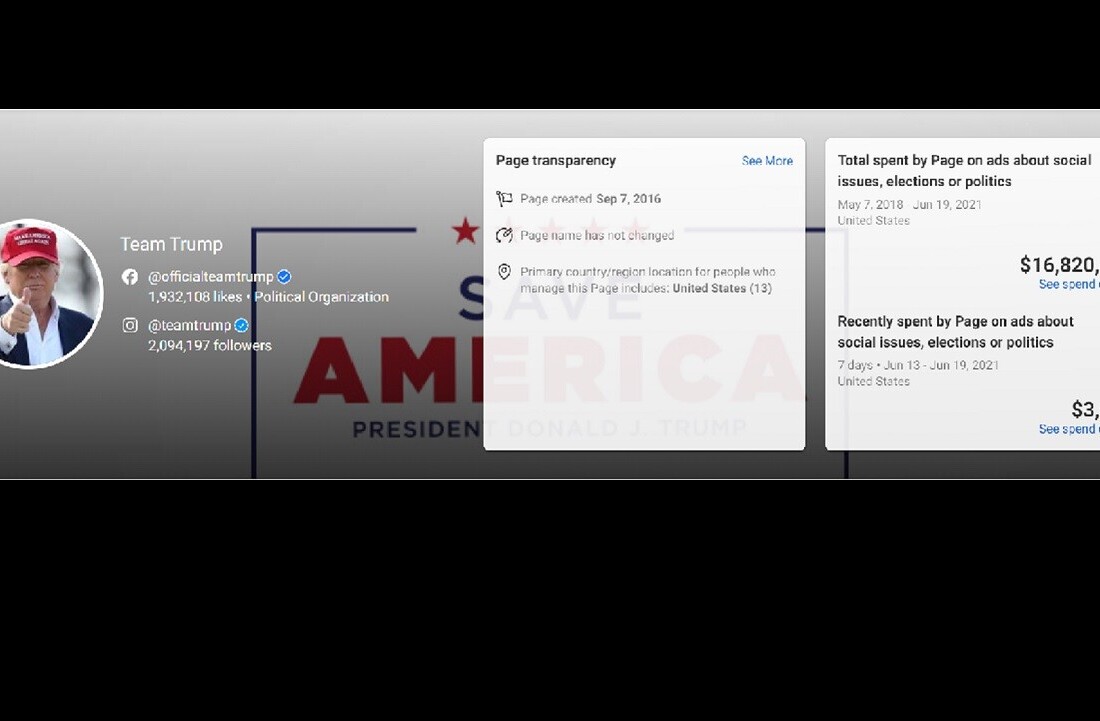When it comes to projecting our identity to the world, there are few products that do so as powerfully as cars. What we drive can tell the world more about who we are than where we live, where we went to school, or who our parents are. You are what you drive, as they say.
This automotive extension of identity has only gotten more nuanced and intricate as vehicle technology has developed and cars have become more feature rich. Now, it seems that every brand of motor vehicle has a stereotype attached.
It’s a phenomenon automotive marketers have long relied on to sell cars, though. As we cast our eyes back over car marketing history, we see vehicles targeted to the family-focused, speed demons, the young, the old, the adventurous, the safety conscious, lawyers, teachers, architects — and in the case of one Japanese carmaker, lesbians.
Subaru was the first auto manufacturer to market its vehicles to the LGTBQIA+ community back in the 90s, many others are now coming round to the idea. But is that a sign of progress?
During Pride month, I spoke with Tim Bennett, Subaru’s former marketing director that led the company’s famed LGTBQIA+ targeted marketing campaign to find out what it took to bring the radical and daring advertising to life.

It’s worth mentioning that the original campaign launched some 25-plus years ago, and people are still keen to talk to him about it — myself included.
“It’s the gift that keeps on giving,” Bennett joked.
The reasons for this aren’t just because Subaru was the first to carry out such a campaign in the automotive industry, but it’s really the last that did so with any real conviction.
So the story goes for Subaru
Back in the early 1990s, Japanese car brand Subaru was a plucky challenger in the US market. Its budgets paled in comparison to the American giants Ford, Cadillac, and GMC. Even among Japanese makers like Toyota, Nissan, and Honda, that were having some success “breaking” into the US market, Subaru was a relatively small fry and was struggling to make a name for itself.
Subaru was unique in the US market, though. It only sold 4-wheel drive vehicles for outdoorsy types, and equipped them with horizontally-opposed “boxer” engines, which were great for towing and carrying heavy loads thanks to their ‘torquey’ characteristics.
As a result, they attracted a very specific type of buyer, one that was highly educated, appreciated and understood the technology, and was willing to pay a premium for it.
Thanks to their unique features, Subaru’s cars were making some headway and appealed to five core consumer groups including medical workers, education professionals, IT professionals, adventure sports enthusiasts, and single-woman households who turned out to be, generally speaking, lesbians.
Here’s where the story really begins. Subaru didn’t go out and target lesbians off the bat, it was largely the other way round. Lesbians were identified as vital customers through a series of focus groups and customer surveys that the company carried out across the US in the early 90s.
Then it became a case of finding a way to talk to them directly and treating them as people. Oh, and of course, dealing with everything that comes part and parcel of marketing to the LGBT community in the mid-90s.
“It was about a bigger philosophy about how the brand was going to talk to consumers,” Bennett said.
Subaru took nine months to figure out how it could do more than just sell cars to these consumers, and become part of the community and support them. After all, lesbians were supporting Subaru by buying its cars.

Bennett says this was key to the campaign’s success. While inclusion for LGBTQIA+ groups is one thing, they are ultimately people who just want to be spoken to and respected like everyone else. Throughout our talk, Bennett said it wasn’t just about running adverts to lesbians. Subaru’s success was the result of cunning marketing that dared to speak to people rather than consumers.
“Really focus your message, whether it’s to women, whether it’s to, in our case, the gay consumer, or other subsets… speak to them directly. One of the focuses that we always employed was speaking to people for who they are not what they are,” Bennett told me.
“When you talk to somebody about the who, it’s a very different proposition than the what, which is really just the demographics people use, which is really lazy, quite frankly,” he added.

Where companies like Ford were running “lazy” multi-million dollar Superbowl ad spots, Subaru invested in highly targeted campaigns, with focused messaging — one series of which targeted lesbians. “I’d rather reach 100 of the right people than a million of the wrong people,” Bennett proclaimed.
From the focus groups, Subaru found that lesbian and gay consumers loved cars like the Forrester because it supported their lifestyle.
As part of the campaign Subaru ran a series of print adverts (pictured throughout this piece) which involved imagery that represented the lives they led, and didn’t focus entirely on the fact that consumers might be gay or lesbian.
Subaru also partnered with openly gay tennis player Martina Navratilova, who was launching their Rainbow credit card at the time, and supported a number of gay-focused charities and health organizations.
After actually engaging with and talking to lesbian Subaru buyers, the company found out that “philanthropy was a big part of what they [lesbians] wanted to see. They said it’s very easy to just market to somebody, but how are you going to give back to the community if we support it as they’ve supported us?” Bennett told me.

It sounds simple enough, and in today’s world for seasoned marketers it should sound elementary, but getting the campaign off the ground wasn’t easy, and obviously it didn’t come without its critics — remember, all this happened nearly 30 years ago.
Two sides of Subaru’s coin
As with every marketing campaign, there are two sides to consider: the internal and the external.
From the outside, Subaru was doing something no one else in the automotive industry had dared to do. Naturally, some — mostly far-right religious groups — took issue with the campaign and sent in mountains of hate mail.
Bennett thinks he’s got thousands of letters and muses making a book out of them one day. The letters were usually poorly written and badly worded from groups and individuals saying that they’ll never buy a Subaru and that the company will “burn in hell.”
But Subaru never engaged with them.
“We would just leave it with our customer service area. Our standard statement was ‘thank you for contacting us. We sell our products to a very well-educated and diverse audience. Thank you very much,’ and just left it at that,” he said.
By having faith in his strategy, the external pressures became easy to ignore, also because Subaru’s plan was working.
Internally, Bennett and his team was having to convince Subaru’s conservative Japanese stakeholders that it was a good idea to target a lesbian audience with messaging that spoke to them and their lifestyle directly.
Bear in mind, this was during the Clinton era of “don’t ask, don’t tell,” and individuals could still be denied apartments or work on the basis of their sexuality. [In fact, while LGBTQI+ communities have been protected partly by local laws in half the country, federal law making it illegal to fire someone on the basis of their sexual-identity only passed earlier this month.]
To Bennett and his team, they thought they had a mountain to climb. But after spending weeks preparing for a meeting in which Bennett’s team proposed internal company changes to support his campaign, they got the go-ahead in a matter of minutes — and so real change was afoot.

While sales were the priority, whether Subaru recognized it or not, it was now pushing the industry in a new and positive direction. Its shift to a more diverse and more inclusive marketing strategy, was also helping the company transform its internal understanding of LGBTQIA+ rights.
One of the most satisfying outcomes Bennett told me of were the numerous “elevator conversations” where his colleagues thanked him for championing the lesbian campaign and gay workers’ rights.
While Subaru was selling cars, inside its corporate walls the campaign was making its employees proud and comfortable enough to start talking about gay rights — even if it was one-on-one in the safe space of an elevator.
This internal shift was crucial to Subaru’s popularity among the lesbian community. It’s easy to simply run a few targeted ads to sell some cars, but for campaigns to really have conviction, the company must live and stand by its messaging.
“Our thought was: ‘I can’t go marketing to gays and lesbians, but then internally, my policies don’t work. Or my policies don’t acknowledge that we have gay or lesbian employees,’” Bennett said. Never be afraid of pushing the entire envelope on and leading the industry, he added.
To do this, Bennett was part of a workgroup that campaigned for same-sex domestic partnership benefits within Subaru, so that LGBTQIA+ employees could get the same employee benefits as their colleagues from heteronormative families.
In the years leading up to the campaign, Subaru’s sales had been steadily declining. In the years that followed, its sales made a remarkable U-turn. It left no ambiguity about the fact that the highly targeted and human approach worked.
Subaru continued its lesbian campaign until the mid-2000s. But the company continues to be associated with, and is popular among, the lesbian community today. Its efforts to recognize lesbians as people, support gay charities, and change its own internal structure haven’t been forgotten.
A change of pace
When other manufacturers started to notice the efficacy of Subaru’s campaign, naturally they wanted a piece of the action. Competitors may have been nervous to engage with Subaru’s strategy at first, but they couldn’t continue to ignore it when the brand started selling a lot more cars.
By the late 90s, there were around a dozen carmakers marketing to the gay consumer. It became “in vogue.” But few approached it with the same conviction that Subaru did; “They all got in, they all got out,” Bennett said.
It was more a bandwagon thing than anything else, according to Bennett. Subaru was always able to stay one step ahead, though. When Ford started buying print ads and taking space away from the Japanese car maker, Subaru went after television ads on MTV’s gay-focused cable channel. By running gay and lesbian-focused TV spots to a dedicated audience, the plucky East Asian car company was able to hold ground against the Americans.

However, that ‘bandwagoning’ did come with broader social good, as it led companies like Ford to change their internal policies too.
Sadly though, those companies that came round to the idea of marketing to the gay consumer base never stuck with it or went as deep as Subaru did. According to Bennett, Lexus is the only car company doing anything of note for the gay market in the US, but even then, it doesn’t appear to be that visible.
Various studies have valued the entire gay consumer market at everything between a few billion dollars to $830 billion to even $1 trillion, so there’s certainly the market out there — somewhere — whether automakers are trying to sell to it or not. “Gay people buy cars!,” Bennett exclaimed.
Indeed, over the 15 to 20 years since the Subaru campaign hit the press. Various car manufacturers have got onboard with gay marketing, but most of the time their attempts to connect with the LGBTQIA+ consumer group comes across as nothing more than a grab for sales. Why? Because they treat their audience as consumers and not as people.
Tesla has ranked as the most popular car company among the LGBTQIA+ community after supporting numerous Pride events with branded vehicles. According to a study by YouGov in 2015, Tesla scored maximum points when it came to working conditions for its LGBT employees. In 2019, the company scored highly again.

However, it’s not without its problems and has been hit with lawsuits alleging that factory workers had been harassed for being openly gay. While it’s easy to support the gay community with branded vehicles that get the company positive exposure, it should apply the same efforts internally — like Subaru did.
One of the most recent car adverts to target the LGBTQIA+ community came from French carmaker, Renault.
In its television spot celebrating 30 years of its Clio hatchback, two young girls meet on a school exchange: one French, the other English. Over their lives they stay in touch, growing to become more than just friends. The ad chronicles their fight against and navigation of all the tropes — that should by now be archaic — that the gay community faces on a daily basis, from homophobic fathers to not fitting society’s mold.
All the while, the humble Renault Clio helps them maintain their contact. It’s the vehicle that punctuates their life together. That is, until one of them marries a man. Eventually, when she realizes her unhappiness, it’s the Clio waiting to carry her away to her one true love and the woman she should have been with.
While some applauded Renault for its same-sex campaign and its exploration of the progress the LGBTQIA+ community has made alongside the Clio over the past 30 years, it’s not gone without its criticism.
Some lambasted the ad saying it was cliché and clearly “made through the eyes of straight people.” While that might be true, it seems to be missing the point. We can be critical of individual adverts in an endless multitude of ways. The really important factor is that the company stands with the LGBTQIA+ community in ways that permeate beyond its adverts.
Renault recently committed to signing the UN’s Free and Equal Charter, and pledged to educate its managers on LGTBQIA+ issues in an attempt to make its workplace more inclusive — this is arguably as important as any advert is when it comes to making a positive and lasting change.
Automotive marketing to gay consumers has come a long way. If conventional auto brands like Renault, and upstart future oriented brands like Tesla are willing to get involved, it’s clear that supporting LGBT consumers has become a more normal thing than it once was — at least in the month of June.
June is International Pride Month, and while any corporate involvement in the festival is undeniably good for the community, Bennett bemoaned their lack of consistency.
“You can’t just throw up a couple of ads or say we’re here for June and disappear. People are going to call nonsense on that,” he said. “You have to have some sort of consistency or at least a plan of continuity.”
With various other carmakers all airing gay targeted adverts over the last decade, it would seem like there’s a long list of companies taking the opportunity seriously.
With a highly valuable consumer, and with most of them saying they feel underrepresented in advertising, the world looks ready and ripe for more companies to follow in Subaru’s footsteps. The Japanese carmaker has certainly laid out the blueprint.
With gay and lesbian marketing being far more common than it once was, and with companies improving their internal process to support the community, in some ways it looks like progress has indeed been made.
However, it still seems more like a fashion trend than anything of substance.
According to Bennett, who now runs a LGBTQI+ radio show and marketing agency that specializes in targeting gay, lesbian, and other niche consumers, companies are still massively hesitant at putting money into serious LGBTQI+ campaigns.
“There’s still this fear,” Bennett said.
“If you can find me 10 companies in the US that are actually doing a national effort beyond June to the gay consumer then I’d be happy, but I would also be shocked.”
If you’re interested in hearing some more about Tim and Subaru’s story, here are a couple of useful sources: NPR Planet Money, The Atlantic, Marketing the Rainbow
Update, August 4, 2020, 0700UTC: The original version of this article did not include “A,” recognizing asexual, aromantic, and agender in the LGBTQIA+ acronym. We regret this oversight and have amended the article accordingly.

Get the TNW newsletter
Get the most important tech news in your inbox each week.





